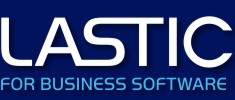 |
|
|||||||||||||||||||||||||||||||||||||||||||||||||||||||
www.lastic.com |
||
|
Key FeaturesDTD Enhancement However, this approach is flawed for two major reasons:
The ideal scenario would be to have the program code generated directly from the DTD. This would enable the DTD document structure and content rules to be quickly and automatically converted into program code, without errors. Any subsequent changes to a DTD's document structure or content will present no major software maintenance overhead, other than having to regenerate the code based on the new DTD. Indeed, the strictly applied and limited syntax used within DTDs makes this possible. DTD structure and content can be analysed by software and it is possible to create XML export code based upon the rules determined by this analysis. However, one major problem persists. The XML documents created by this code will not contain any data. The DTD defines what the XML data should be and how it should be structured, but not how it is obtained. The key to automatically generating useful XML export code from DTDs is, therefore, to place the data access logic within the DTD itself. Indeed, this greatly simplifies the management and maintenance of XML generation projects, since for any given DTD the data structure, content, and access logic could all be found and modified in one place. The Lastic DTD Project Manager (L-DPM) works on this principle. The developer enhances a DTD with data access functions (written in Caché Objectscript / M) embedded within 'specialised' comment tags. A data access function is specified for each element within the DTD containing attributes and/or element content. Each function will return the appropriate attribute values and PCDATA content for the associated element. Importing / Managing DTDs Edited DTDs can also be re-exported out to PC files. Routine Generation The L-DPM analyses the DTD and incorporates the data access functions embedded by the developer. It determines the structure of the required document including repeating and choice elements/groups and individual element attribute definitions including default values. It then creates a Mumps routine which obeys the structure of the DTD to ensure a well formed XML document is produced every time. The routine is saved using a $ZSAVE. It may be viewed using your usual routine editor. Using the Export Routines
The parameter list is specified in the data access logic embedded within the DTD. Prior to calling the routine, the parent application should open the required output device, and close it upon return. Externalizing device management ensures greater platform independance. Additional runtime options include specifying XML header info. (e.g. DOCTYPE definition) and "pretty printing" (element / attribute indentation). The runtime library routine will also automatically add any default attributes not generated by the application. |
| HomeLegal/PrivacySitemap | Copyright © 2013 Lastic Limited. Website by Fluid Media Ltd. |